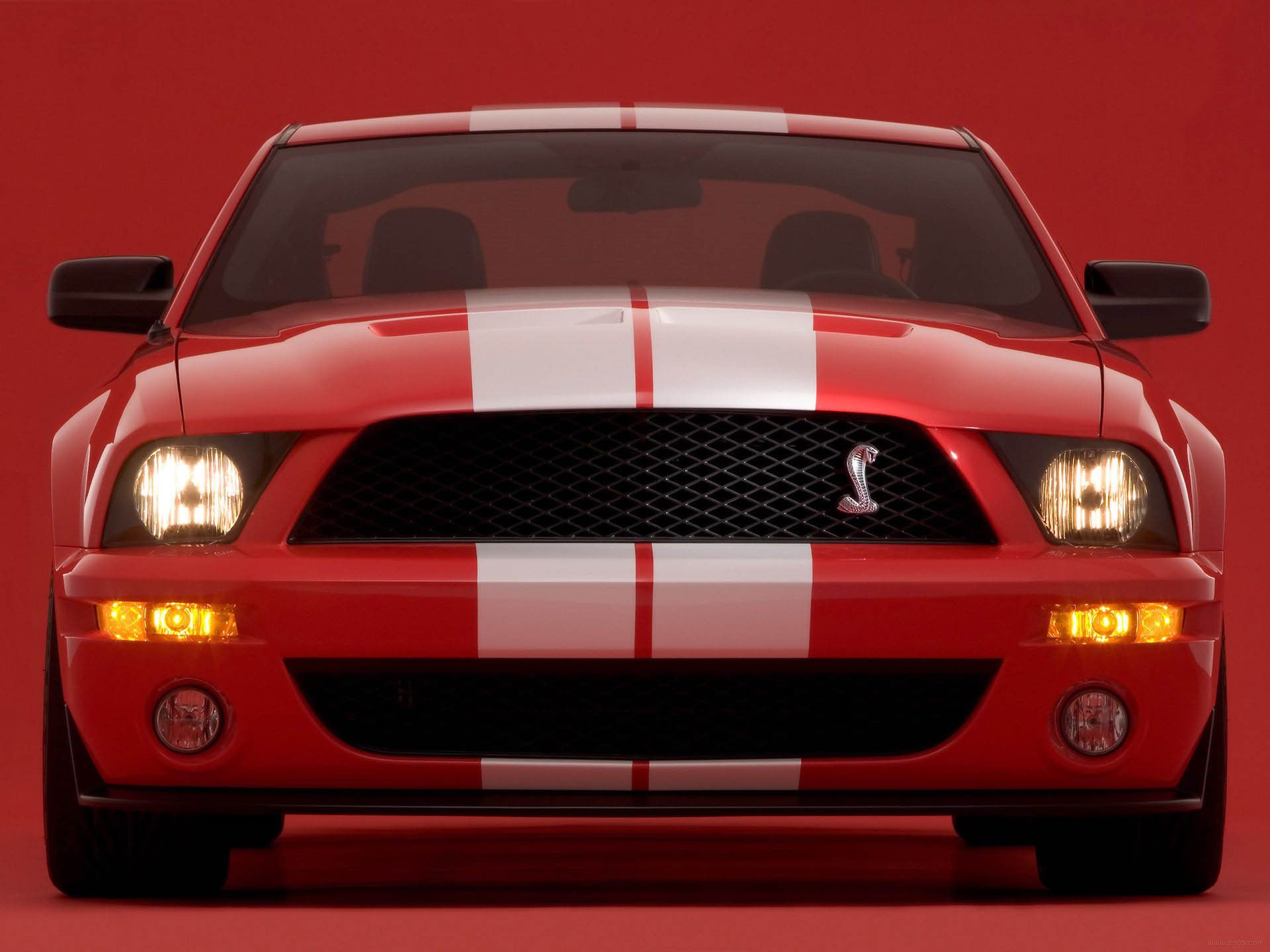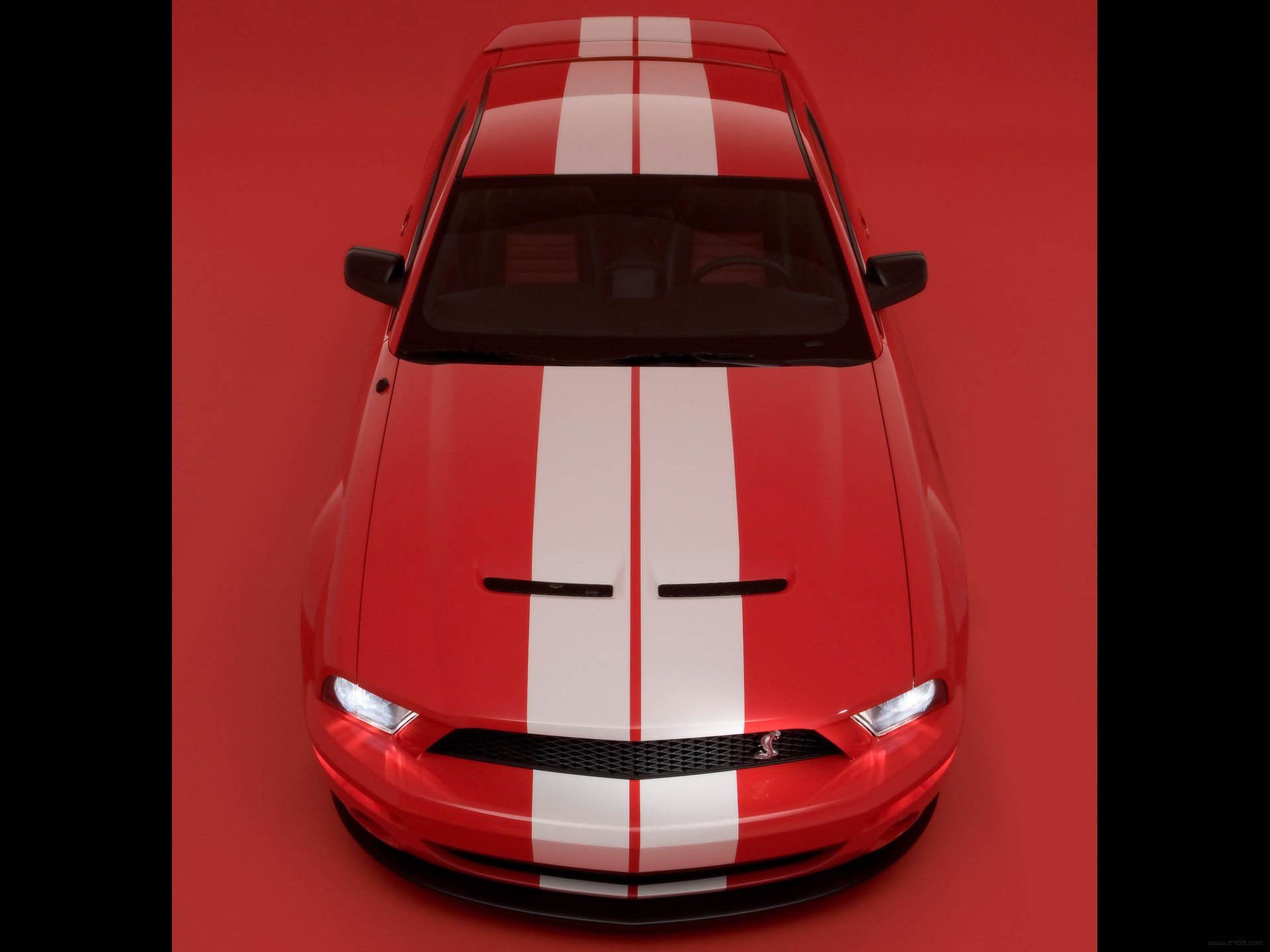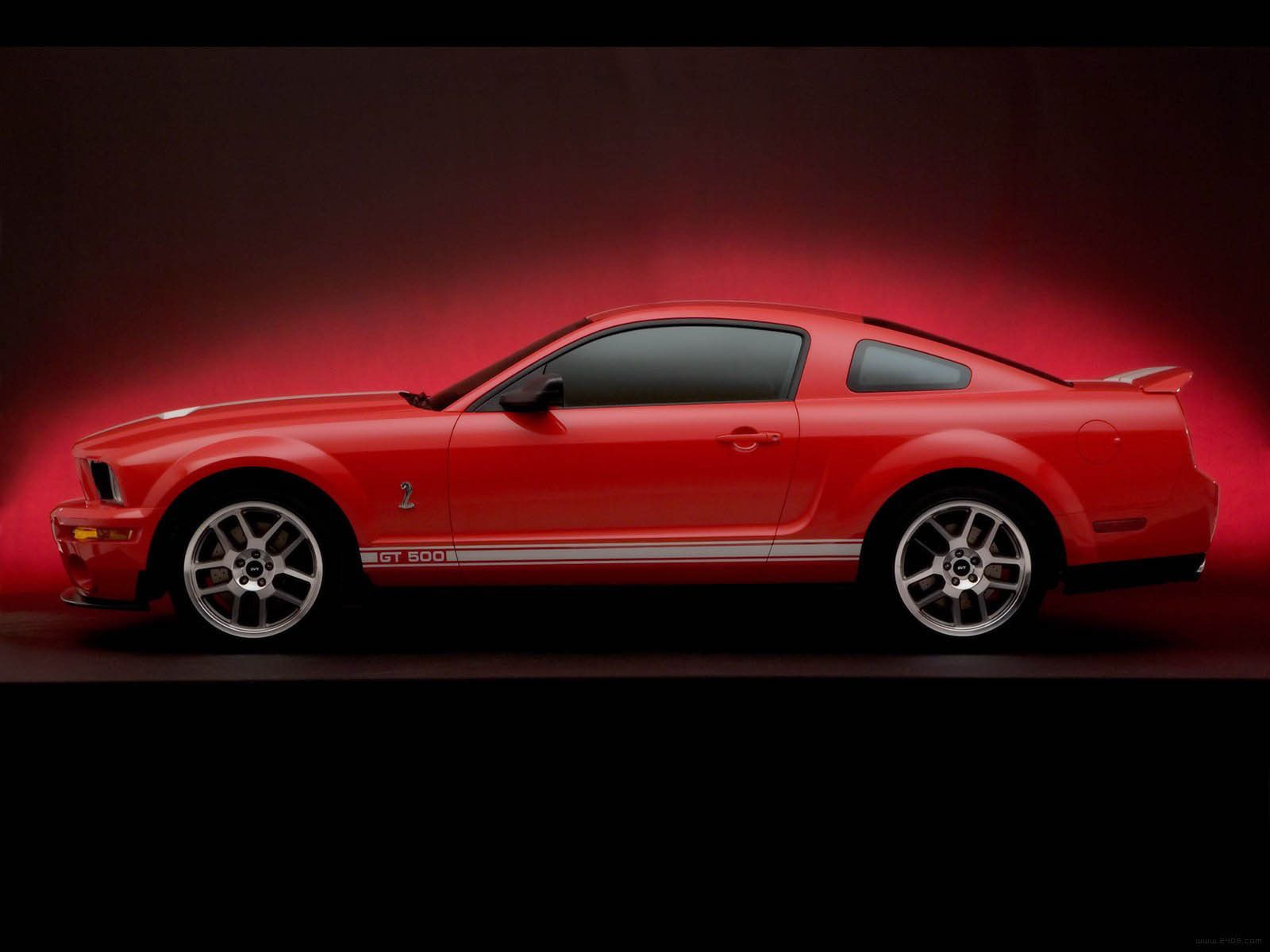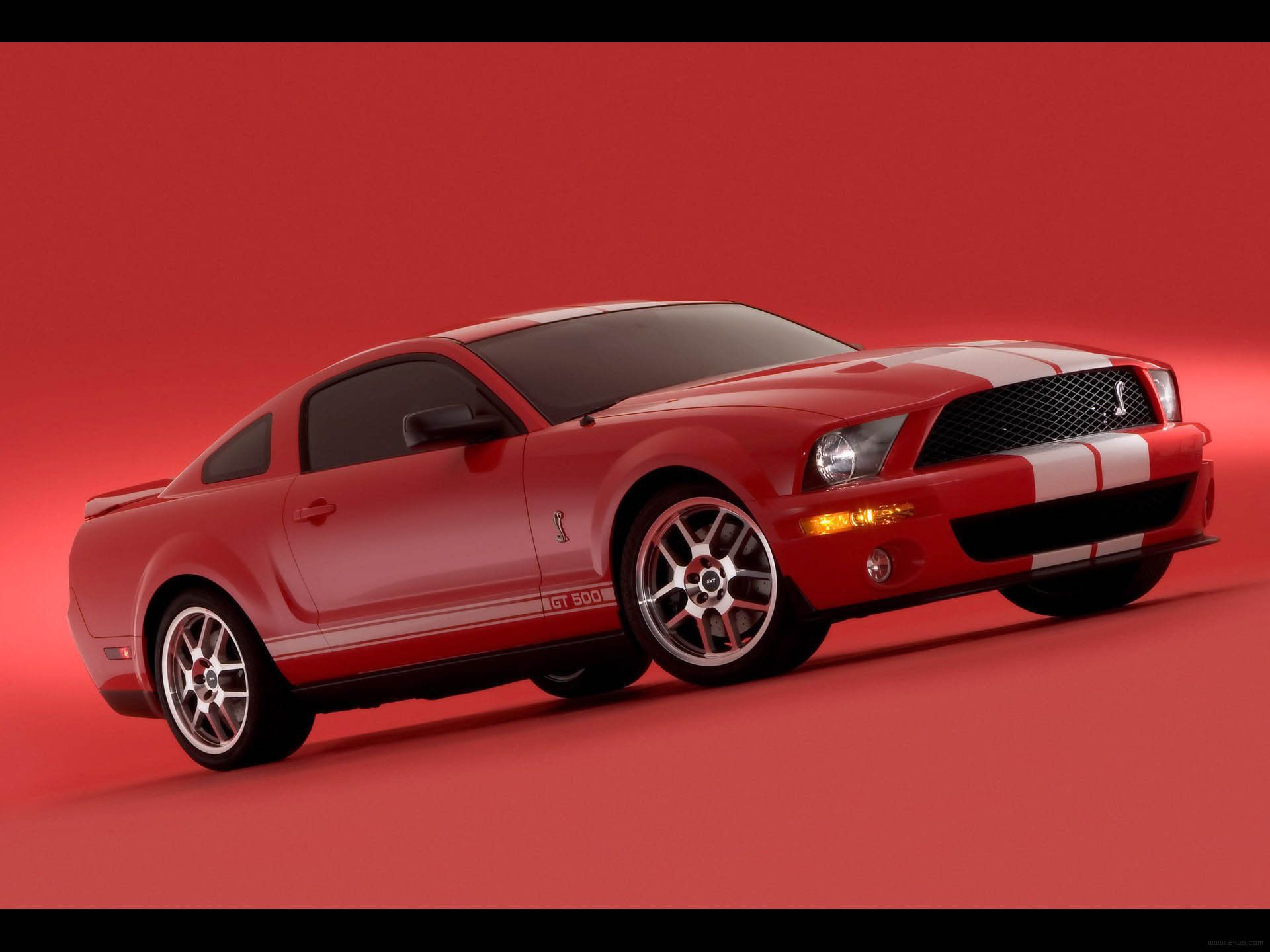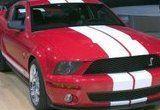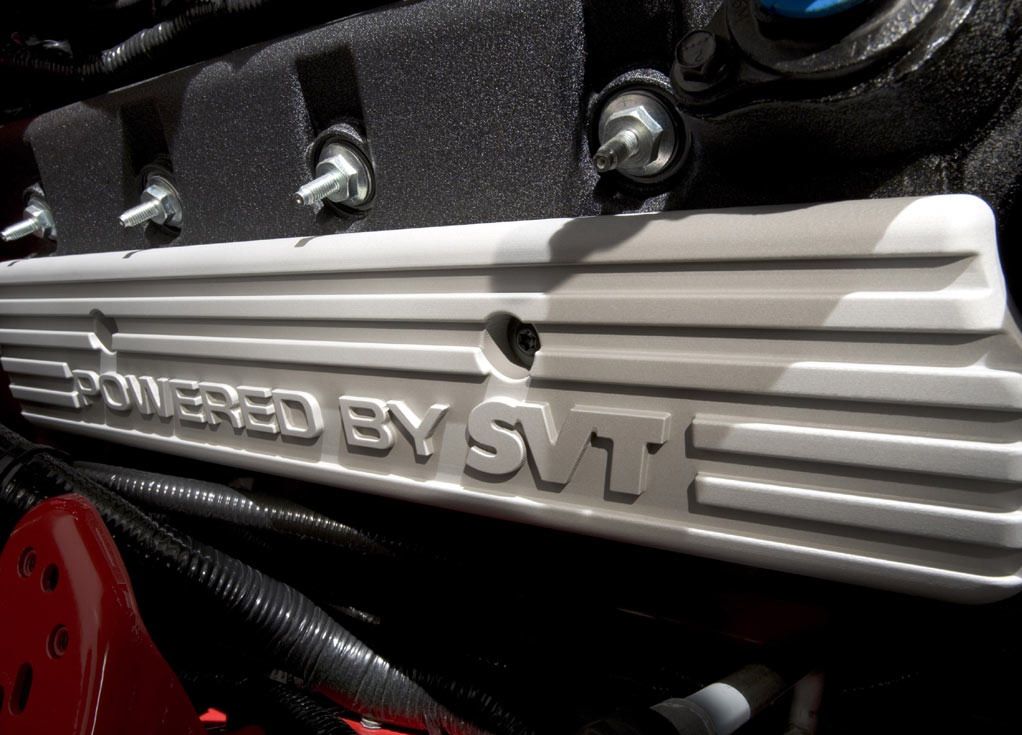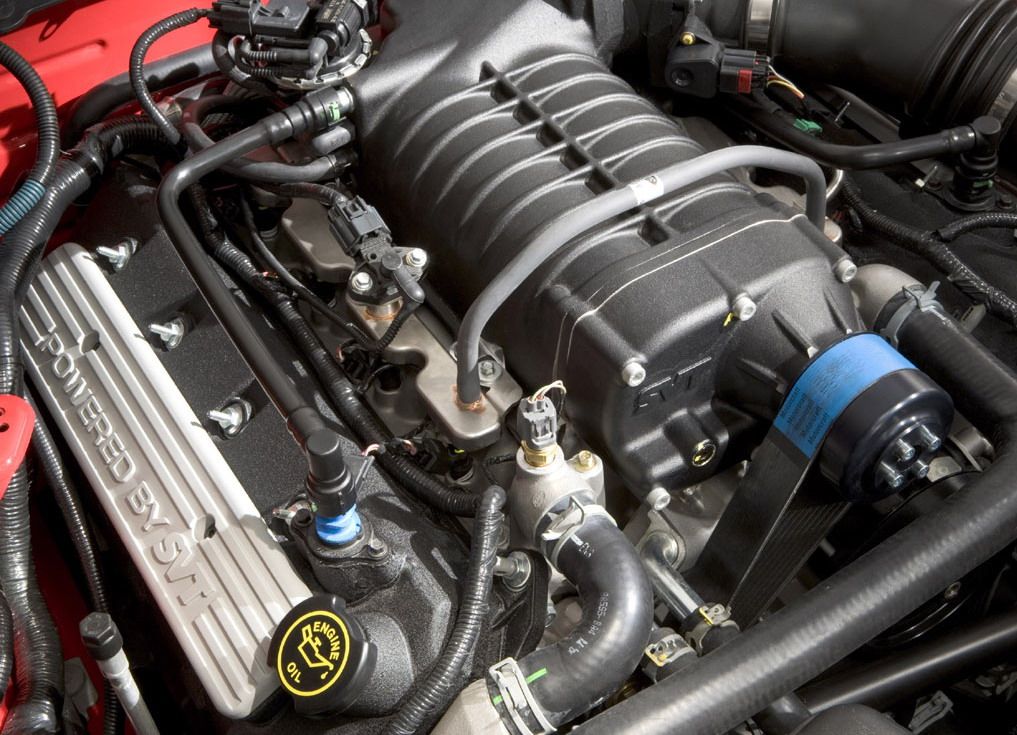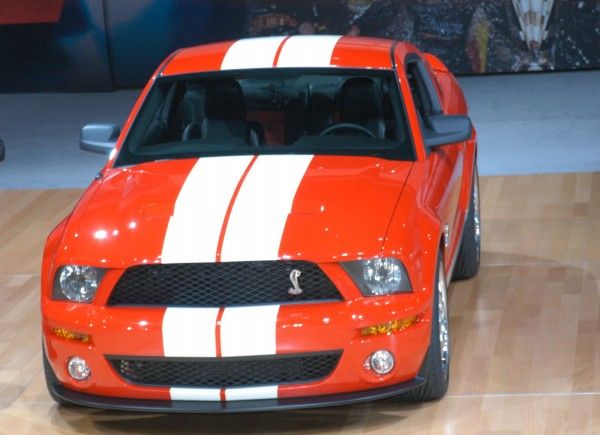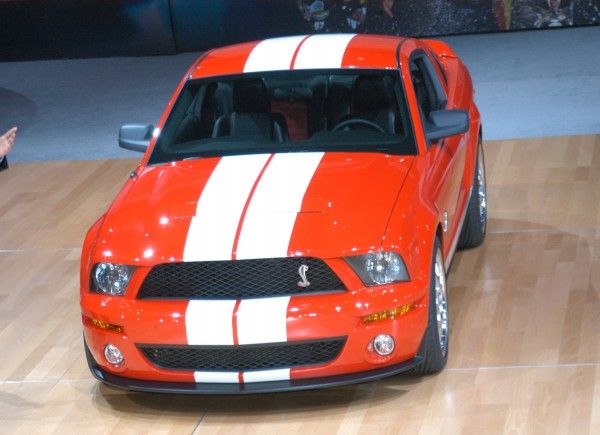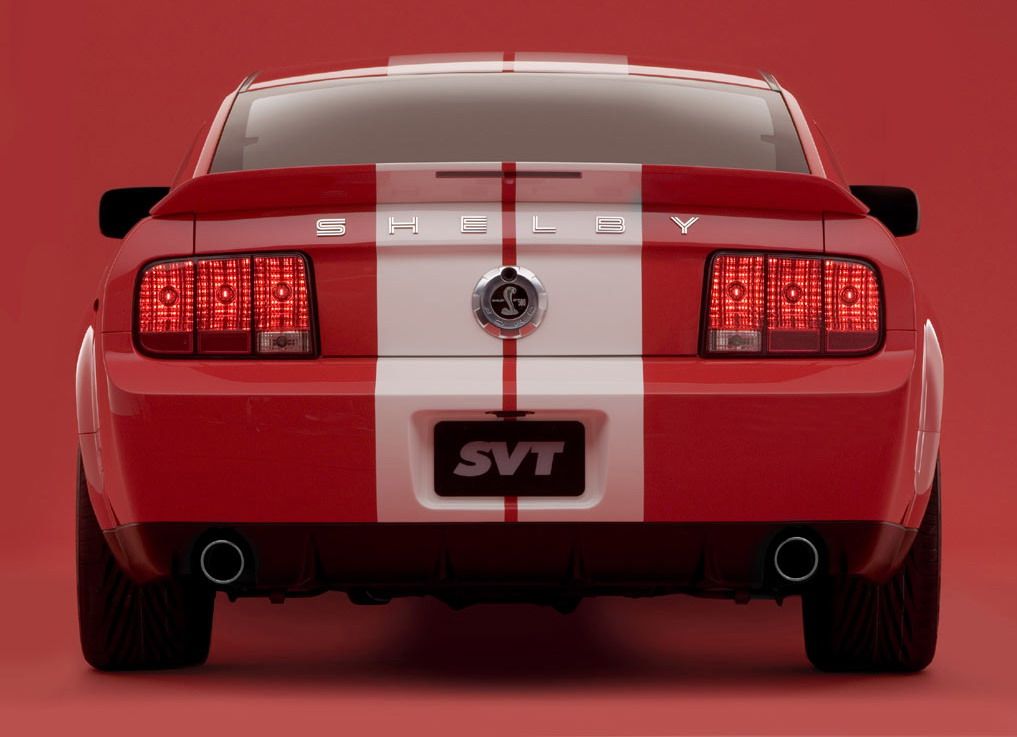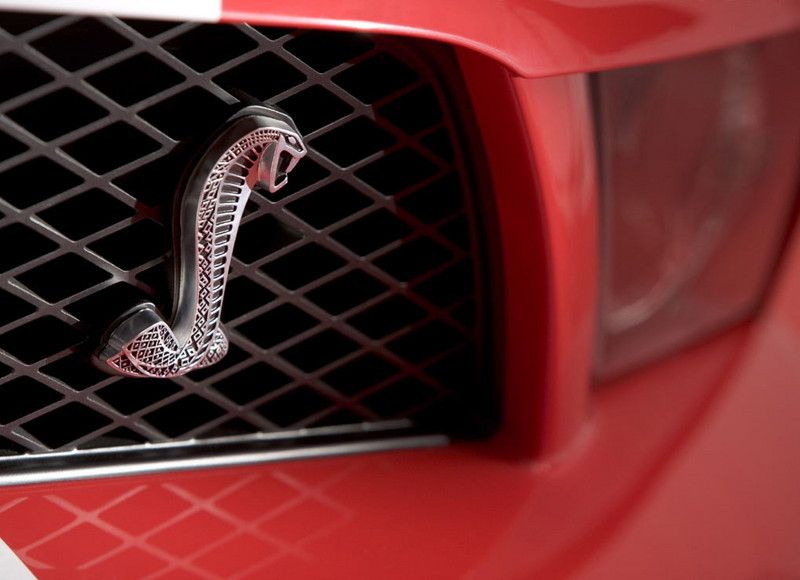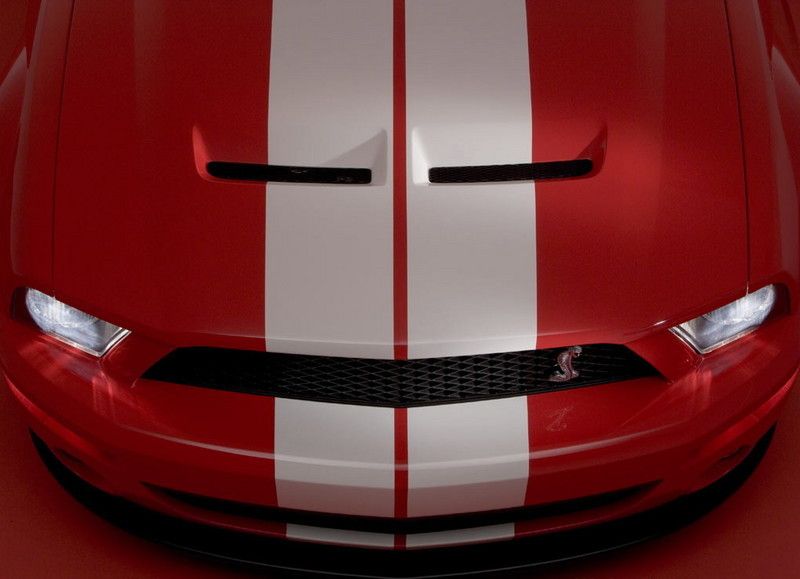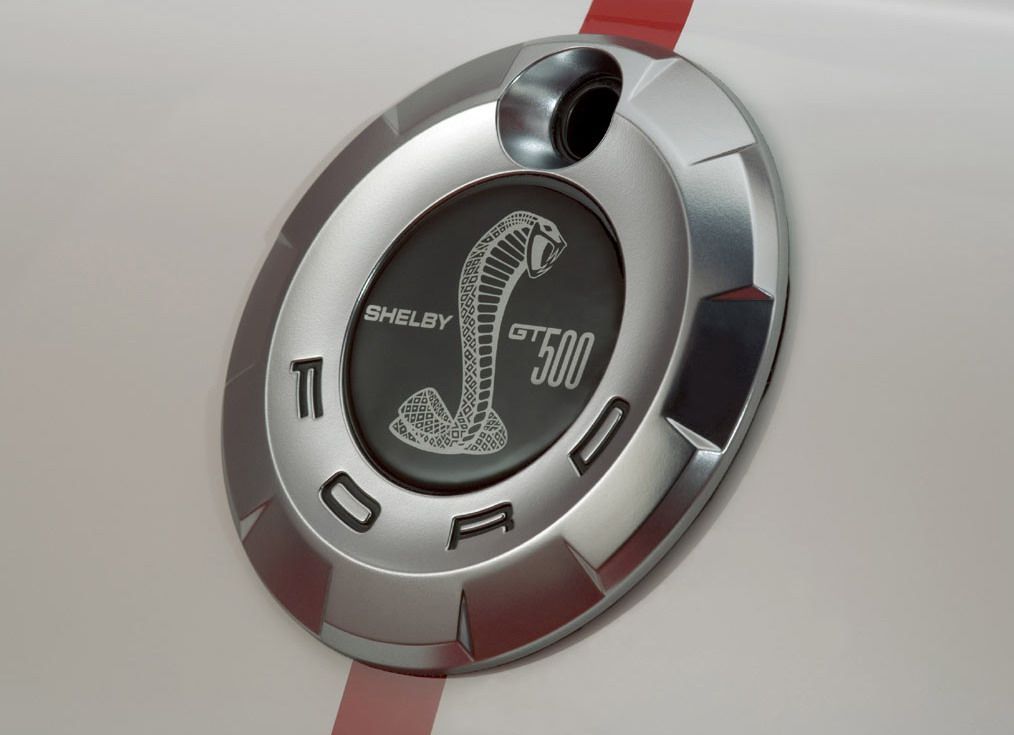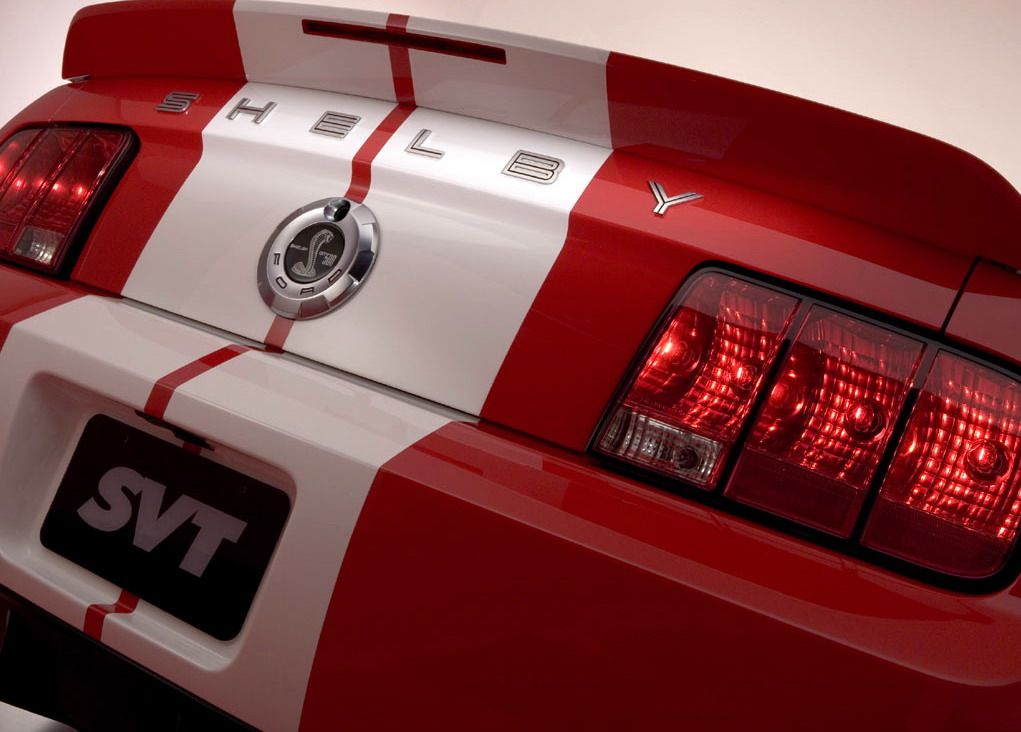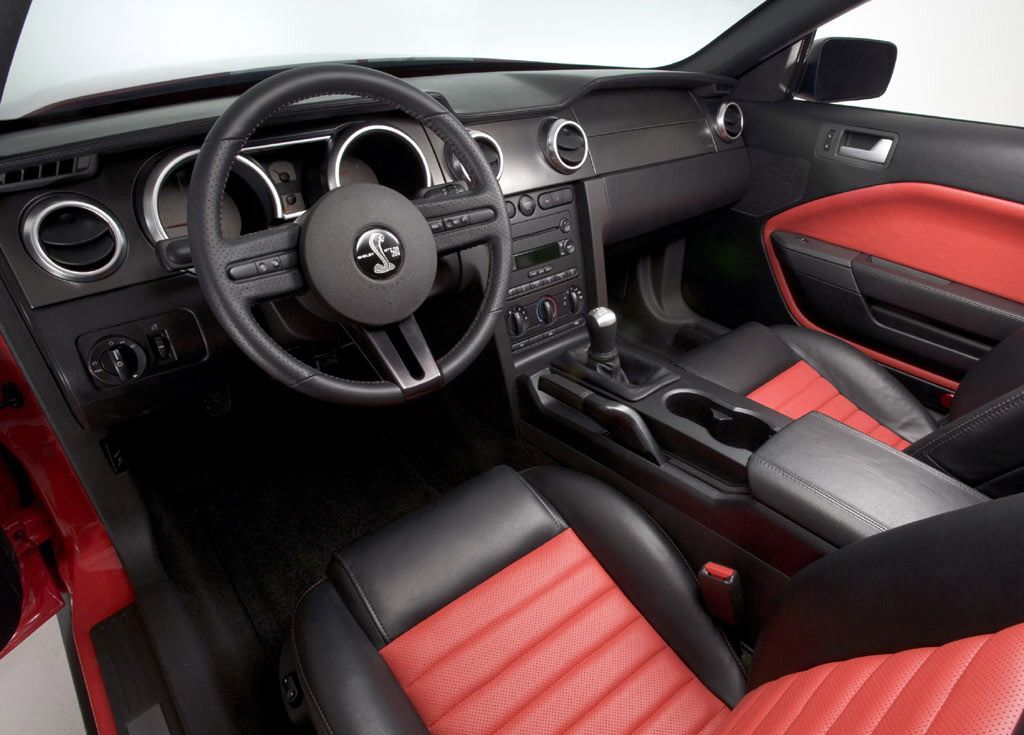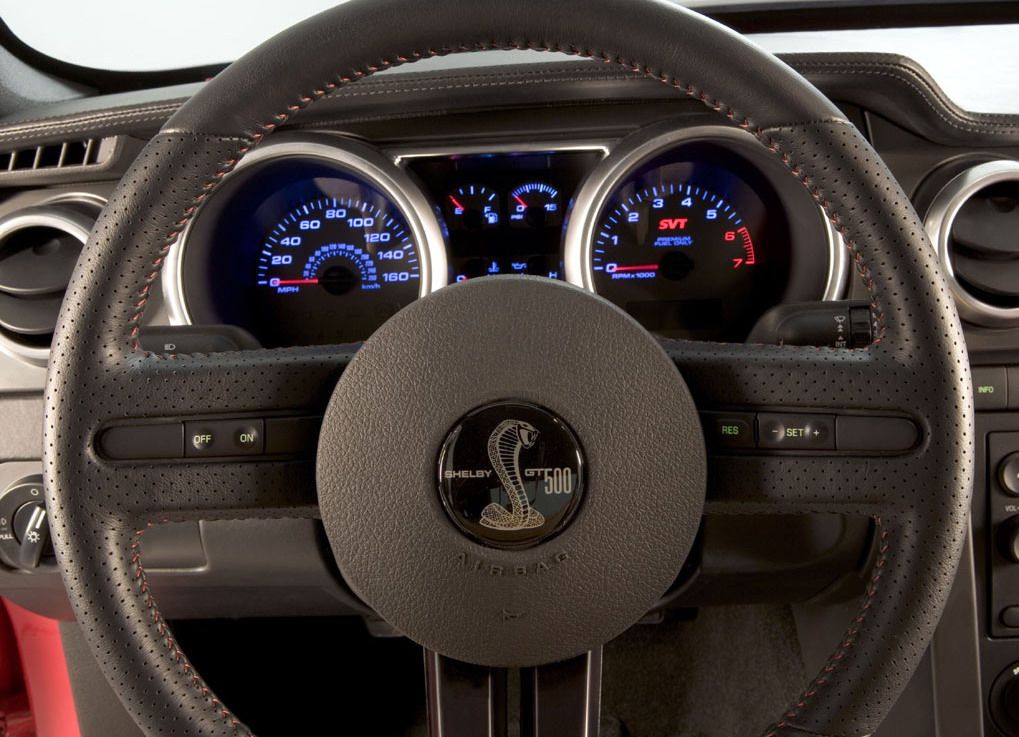Ford Motor Company->ke31 and Carol Shelby have a long and rich history together. Shelby, a WWII flight instructor and test pilot turned professional racecar driver, started his company named Shelby America->ke81 company in 1962 building a modified version of the AC Cobra.->ke1356 Shelby transformed the small, European roadster into an American muscle car thanks to a Ford V-8. He soon turned his attention to other vehicles as well, including the then-new Ford Mustang.->ke428
Shelby’s relationship with the Mustang would be his most iconic. His first would be the 1965 Shelby Mustang GT350. It was followed by the Shelby Mustang GT500 in 1967 and the GT500KR in 1968. After 1969, Shelby stopped modifying the pony cars, but not before making a name for himself.
It was in 2005 that Shelby decided to revive his Ford heritage. The fifth generation Mustang had just been released and its retro design begged for Shelby’s touch. Working with Ford’s SVT team, Shelby and the crew developed the GT500 – a supercharged V-8 Mustang with 450 horsepower, a matching amount of torque, upgraded suspension components, brakes from Brembo, and a bespoke exterior treatment that make the Shelby Cobra GT500 unique. The car didn’t hit showrooms until the 2007 model year, and within that development time, the GT500’s horsepower had grown to an even 500 horsepower and 480 pound-feet of torque.
The GT500 was the most powerful production Mustang Ford had ever created and helped reignite the high-horsepower wars between Detroit’s Big Three – Chevy,->ke199 Dodge,->ke28 and Ford. So without further introductions, let’s take a look at the 2007 Shelby Cobra GT500.
Continue reading for the full review
2007 Shelby Cobra GT500
- Make: Array
- Model: 2007 Shelby Cobra GT500
- Engine/Motor: V8
- Horsepower: 173@6000
- Torque: 4400
- Transmission: 5-Speed Manual
- [do not use] Vehicle Model: Array
Exterior
Shelby and the Ford SVT team started with the stock Mustang GT. The design was new for 2005 yet carried some iconic bodylines that Shelby found familiar. The teams used this for an advantage, helping pull retro cues into the Shelby Cobra’s styling. The front grille and fascia were changed, with the GT’s driving lights removed and the lower grille tweaked. The Cobra emblem sat alone inside the empty upper grille, its sinister face mocking lesser cars. A front chin splitter helped create downforce at higher speeds.
Around the side, the Cobra GT500 got a custom-designed, double five-spoke chrome wheel not found on any other Mustang variants. The GT500 and Cobra logos were stacked between the door and front tires, letting others know exactly what’s under the hood.
Out back, a large spoiler helped with downforce, while a diffuser between the dual exhaust pipes helped direct air from under the car. A double racing strip, characteristic of Shelby Mustangs, runs down the center of the car. Otherwise, the GT500 carries the same body panels and looks as the standard Mustang GT.
Interior
What’s a special edition Mustang with out some interior improvements? The design team wrapped nearly every surface in ebony leather, including the steering wheel, dash, center arm rest, shifter and its boot, the e-brake handle, and of course the bucket seats front and back. The seats themselves are accented with red center sections, matching the door panels. The look brought a nice contrast to the otherwise dark interior.
Other accent pieces included the Shelby GT500 script and Cobra logo on the steering wheel cap. Titanium-faced gauges replace the stock set, helping the driver keep tabs on vehicle information more quickly. The chrome accents normally found in a Mustang GT were also replaced, this time, with a satin aluminum finish.
Drivetrain
Of course, the biggest improvements were made under the Mustang’s hood. The stock 4.6-liter V-8 was ditched in favor of the larger 5.4-liter V-8 similar to Ford’s truck engine. Even still, the V-8 was thoroughly worked over. The cast-iron block remained, but the aluminum cylinder heads, piston rings, and bearing were all borrowed from the Ford GT program – yet another high-performance product from Ford in the mid 2000s.
Once buttoned together, the engine was topped with a screw-type supercharger that fed 8.5 pounds of boost into the cylinders. This pushed the Mustang’s horsepower rating to 500 at 6,000 rpm while torque came in at 480 pound-feet at 4,500 rpm. That’s a whopping 200 horsepower and 165 pound-feet of torque more than the Mustang GT’s 4.6-liter. At the time, the GT500 was the most powerful Mustang to ever roll off Ford’s assembly lines. The engine came mated to a Tremec T-56 six-speed manual transmission with evenly spaced gears. Power was then sent rearward to Ford’s live axle.
With the additional power, the Shelby Mustang could hit 60 mph in roughly four seconds. That’s down from 5.1 seconds to 60 mph in the stock Mustang GT. The quarter mile happened in 12.5 seconds at 116 mph.
Getting the car to properly turn was also a concern for the SVT team. Up front, a MacPherson struck combination with “Reverse L” lower control arms started the transformation. Different shock absorbers, new springs with revised rates, and larger stabilizer bars were added to help the car handle more accurately. The solid rear axle and its three-link suspension with coil springs and Panhard bar were better dialed in, as well.
Stopping power came courtesy of Brembo. Large, 14-inch rotors with cross-drilled vents were added up front, while the rear axle wore 13-inch rotors. The disc and calipers fit nicely within the Shelby’s 19-inch wheels wearing 255/45-series tires up front and 285/40-series rubber out back. The biggest downfall for the ‘Stang was its weight. Coming in at 3,920 pounds, the car was porky, making its limit handling somewhat challenging.
Price
Not only was the Mustang Shelby Cobra GT500 the most powerful Mustang to date, it was also one of the most expensive. It carried a base price of $41,950. For that, you got all the good stuff including the supercharged V-8, manual transmission, upgraded suspension bits, and all the Shelby Cobra badging anybody could want.
Competition
Chevrolet Corvette C6 Z06
When the Shelby Cobra first hit the streets, its honest rival was in hiatus. Chevy had put the Camaro to bed after slumping sales of the fourth generation car. Major credit can be given to the Mustang’s revived success after 2005 for spurring Chevy into reviving the Camaro nameplate for the 2010 model year. Nevertheless, the ‘Stang’s biggest rival in 2007 was the Chevy Corvette Z06. In those years, it was the sixth generation of the Vette that roamed the streets. It came powered by a 7.0-liter LS7 V-8 that made 505 horsepower and 470 pound-feet of torque. That pushed the lightweight two-seater to 60 mph in a quick 3.7 seconds.
The Vette was more expensive, however, with a starting price around $75,000.
Conclusion
The 2007 Shelby Cobra GT500 was a benchmark car for Ford. It brought back the Shelby name and prestige to the Mustang brand while injecting a ton of go-fast bits that made them candidates for bedroom posters. The car sported looks that were still very fresh thanks to the Mustang’s 2005 retro-styled redesign, and its interior was shared in the styling while offering all the then-modern technology and equipment.
All told, the Shelby represented cheap thrills. No other automaker offered 500 horsepower for $40,000 and made it accessible at the local dealership level. Ford certainly won points, though Chevy soon countered with the 2010 Camaro and its performance variants that followed soon after.
Still, it’s hard to imagine a modern car that evoked the past while moving forward with new-age technology and go-fast bits. Ford certainly hit a homerun with the Shelby Cobra GT500.


